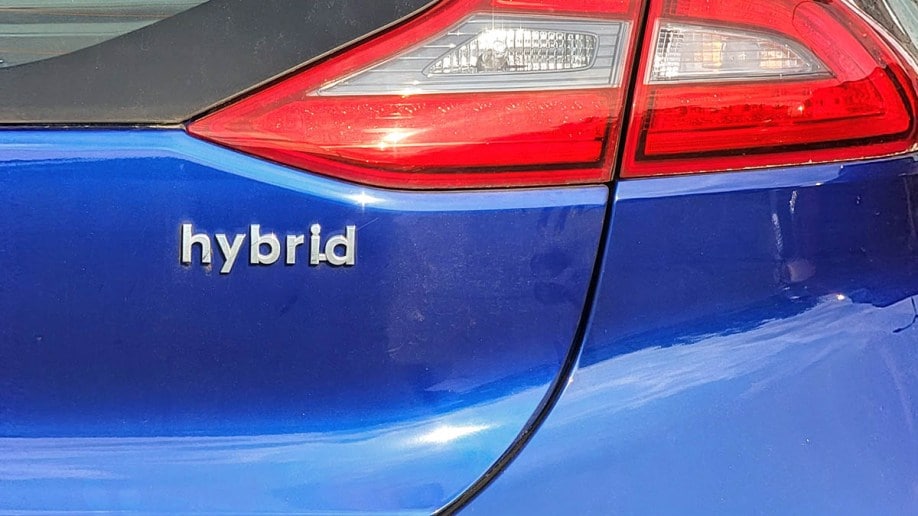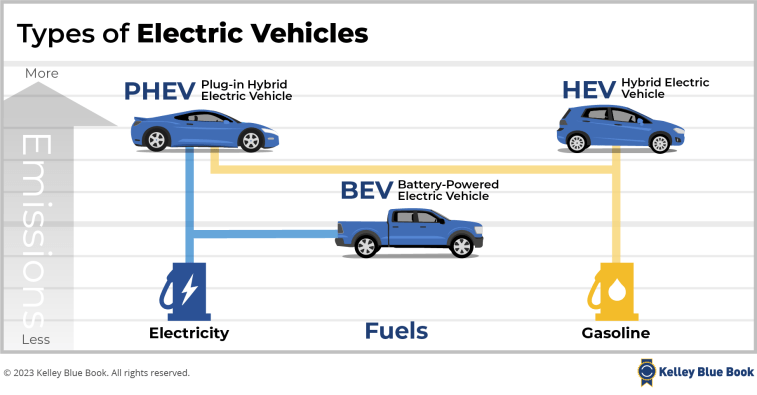What Is a Hybrid Car?
By Russ Heaps 07/25/2023 4:00pm

What Is a Hybrid?
A hybrid is an automobile with a gas-powered internal combustion engine (ICE) and a battery-powered electric motor to propel the vehicle. Based on that definition, there are two types of hybrids: full hybrids (HEVs) and plug-in hybrids (PHEVs).
Mild hybrids (MHEVs) work differently. In addition to an ICE, an electric motor is used to start the engine and brake or slow the car, recovering brake energy. This energy is stored in a battery and then used to help boost the ICE during acceleration. The electric motor in an MHEV never propels the wheels alone.
Let’s look at how HEVs and PHEVs operate.
There are two significant differences between an HEV and a PHEV. First, a PHEV’s battery can recharge when plugged into an external electricity source. An HEV uses its engine and regenerative brake system to recharge its battery while driving.
Second, a PHEV can propel the car on battery power alone for distances of up to 20-30 miles at any speed. Although an HEV can sometimes move the vehicle for short distances at low speeds, it primarily uses its electric motor to help the ICE accelerate when additional power is required.
What Is a Full Hybrid?
Until about five years ago, we thought of a full hybrid when we heard the term “hybrid.” Arguably the best-known HEV – and hybrid in general – is the Toyota Prius, which rolled onto the stage in Japan in 1997. Without wandering too deep into the weeds, the Prius uses the Toyota Synergy Drive, a parallel hybrid system. That means it has two separate drive systems (electric motor and gas engine) that can work together or sometimes separately to power the car. With a parallel system, the ICE and regenerative brake system recharges the hybrid’s battery.
The other major HEV system is a series hybrid, which uses a single-drive system shared by an ICE and an electric motor. Its disadvantage is that it requires a larger ICE to keep the battery charged because it doesn’t provide the regenerative braking feature. This is the primary reason today’s hybrids are exclusively parallel hybrids.
In either case, an HEV is self-contained – it recharges the battery internally.
What Is a Plug-In Hybrid?
PHEVs share some characteristics with parallel HEVs. There is an ICE component and an electric motor component, each with its own drive system. As a parallel hybrid system, the ICE and regenerative braking contribute to recharging the electric motor’s battery. The major difference with a PHEV is its larger-capacity battery. Because of the increased battery size, some PHEVs can drive 30 miles or more on electric power alone. However, the ICE and regenerative braking aren’t sufficient to fully recharge that larger battery. Consequently, a PHEV requires an outside source of electricity to recharge its battery. This is where the “plug-in” part comes in.
Like fully electric vehicles (EVs), PHEVs have a charging port where a charging cable connects. Owners may plug into a 120-volt household outlet to recharge the battery over several hours. A quicker option is using a 220-volt Level 2 charger installed at home or stopping at public charging stations available at some shopping centers, parking garages, workplaces, and other locations.
Bottom Line
An HEV is an excellent avenue to better fuel economy if you want to keep things simple and less expensive at the point of purchase. Green America says the improvement over an ICE alone, on average, is somewhere between 20% and 35%. On the other hand, if you are willing to spend more for the purchase and deal with plug-in recharging to obtain up to 20-30 miles of electric-only travel each day, a PHEV is for you. In either case, a hybrid will save on gasoline.

